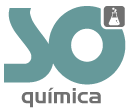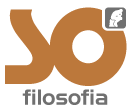Tips for giving Effective Presentations
Language Skills
By Eliana Santana Williamson* - BRAZ-TESOL Newsletter
The BRAZ-TESOL
conference is coming and soon we will get to know if our proposals are accepted. Our next step is to get ready to present. How many times have we been to presentations that we wished would end before it was half way through? As a presenter and attendee of conferences in Brazil and abroad, I would like to mention 15 tips that are important to consider in order to give effective presentations.
1. Define exactly what you want the audience to know, to be aware of, or to be able to do by the end of the presentation. If you don't have that clear in mind, you run the risk of presenting just for the sake of it.
2. Think of your presentation in terms of content and processes. For example, use jigsaw, group, pair, and individual tasks, vary the processes. Some researchers say that adult humans have a ten-minute attention span. Keep that in mind!
3. Write a script, look up words in the dictionary, make sure that you want to say is what you are saying, but do not present regarding out of the script. The script is just a way of helping organize your thoughts, and not to be read aloud. Write the key words from your script down. They will help you remember what you want to say!
4. Present to an audience of friends, get their feedback, change whatever needs to be changed, present to the same audience again till you feel the audience is reacting the way you want them to.
5. Throughout the presentation do not forget to keep eye contact with the audience and to give equal attention to everybody. Feel how they are reacting to the tasks and make on spot decisions if need be. Also, make sure everybody can hear you!
6. Keep interacting with the audience and giving them time to integrate the content presented to their individual teaching contexts.
7. Use pauses and avoid "umm". Pauses are not only for gathering thoughts, but are also crucial moments in the presentations. They should actually be planned!
8. If you are going to use visuals, such as OHPs, or PowerPoint presentations, do not overwhelm the audience. The audience should not feel they don't know if they should look at the visual or listen to you. Although visuals are an asset in any presentation, if not used wisely, they may be a hidrance. Therefore, whenever using visuals, use them as a catalyst or as a way to elicit information from the public, or as a way to flash some ideas quickly.
Keep in mind that visuals should be an aid at a presentation, the main point should always be the information given and what the audience is going to take from it. Avoid bringing too many visuals; prefer pictures that will help the audience connect what you are talking about to their realities. In case there is written information, give the audience time to read it. Individuals read at different speeds.
9. At the beginning of the presentation, ask the audience a question or set an issue that will be confirmed or not by your presentation. This way you can raise the interest of the audience in what is coming next, and keep their attention till their answers are confirmed or not. Do not forget to go back to it at the end of the presentation!
10. Do not sit or stand still, keep moving. This way the audience has to keep moving their heads and eyes, and it keeps their attention for a little longer. Do not overdo it, though!
11. Smile, and, if possible, use humor. However, if you don't feel like using humor, do not do so. There is nothing worse than a joke that falls flat!
12. If you are nervous, do not say to the audience that you are. Breathe deeply and keep in mind that those that are attending your presentation are there because they want to. There is nothing more uncomfortable than being in an audience and feel the presenters' nervousness and discomfort.
13. Keep in mind the time you have to present. Make sure you do not under or over use your time. But do not keep looking at your watch all the time, and do not complain in loud voice about the little time you have. In case you notice you won't have time to do everything you've planned, cut something out, and keep presenting. The audience does not need to know that!
14. If you don't have time to vary the processes, use the "buzz technique": ask the audience to talk to someone to their right, left, behind, or in front of them about something for a minute or 50 seconds. That will give them a chance to keep tuned to what the presenter is talking about and interact with the subject, integrating it to his/her own context.
15. Leave five minutes in the end for questions and comments. Make sure one person does not dominate, and make it clear to the audience how much time is left. Learn from your experience as a presenter and an audience. After your presentations, write down what worked and did not work and why. Do the same in other people's presentation. Think about in what the presenter, and yourself as a presenter could have done in order to have given an even better presentation. In this way you will be growing as a presenter and using your mistakes as fuel to learning!
* Eliana S. Williamson has been in EFL/ESL for 11 years, and has worked as a teacher educator for CCBEU-Belem.






























